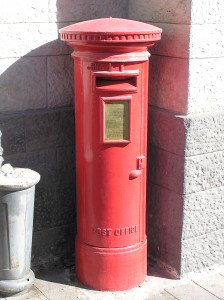 Thanks for the comments on my recent post, Whatever, on pay-what-you-will pricing.
Thanks for the comments on my recent post, Whatever, on pay-what-you-will pricing.
Joanna writes:
There was the instance in 2007 when the band Radiohead sold their album, In Rainbows, on a pay-what-you-can basis. My understanding is that even this extremely popular band that doesn’t have to do much to get people to buy their records figured out this strategy didn’t work in generating revenue.
Agreed. And Radiohead’s strategy has to be seen in the context of using sales or distribution of recordings as a means of generating demand for concert tickets, which, for Radiohead, are neither pay-what-you-can, nor cheap. That’s very different from a theatre company using pay-what-you-can for tickets, when tickets are their primary source of earned revenue.
Leonard writes:
The piece missing for me is where the philanthropy might or should come from to support this idea — for it’s the philanthropic sector, too, where additional revenue could come from if this idea is pitched effectively by various powers-that-be.
Maybe. But I have to wonder about this strategy – do major donors to the arts really say ‘go ahead and reduce your earned revenue, I will increase my donations in response.’ I can see a donor wanting to help a valued cultural organization if there is not much earned revenue to be had. But if the organization is deliberately reducing its earned income?
From Christina:
Free night of theater and pay-what-you-will nights work really well for poor theater insiders who are very familiar with the theater scene and know to watch closely for those nights, or for those who are only interested in going to the theater once or twice a year and even then only if it’s free. What becomes possible with an entire season that is essentially free or very inexpensive is the creation of a community around the theater company, repeat visitors who can afford to attend any night a show is playing, not just during that one special week or the very first night of previews before reviews come out. THAT’S how you build an audience.
Yes, there’s no question that effectively lowering the price of admission is good for ticket buyers, and may bring a bigger audience. But really – if a theatre company can provide cheap tickets on an otherwise-quiet night, or during previews, why go pay-what-you-will? Why not be a little bit more strategic in pricing?
And Nina sends us this link to a pay-what-you-will strategy for the children’s museum in (relatively low-income) Tacoma, WA. Interesting to me in that strategy was that daily admission was never going to bring much revenue, that there was a genuinely significant demand from people who would attend were the museum free, and on not giving up the search for earned revenue, but switching the focus to earning from special events and memberships with specific benefits. As with Radiohead, lowering the take from one revenue source can be strategic when there are other earned revenue possibilities.
Again, thanks to all for writing in!
UPDATE: And I forgot to include this recent post from Tim Harford, who writes:
Where do we stand now with PWYW? Since textbook economic agents would choose to pay nothing, the idea defies economic assumptions. But those assumptions may be reasserting themselves. Panera introduced a PWYW meal in all its cafés in March, but axed the experiment in July. Some other high-profile PWYW restaurants have closed after a year or two, or switched to conventional pricing.
As for Radiohead’s In Rainbows, creative projects are released with voluntary pricing every day. But it has been a long time since I remember any such project hitting the headlines. And, since some of the PWYW appeal was surely publicity, the model was always reliant to some extent on novelty.

Maybe it’s some weird anomaly, but I can name a cultural institution in one of the (non-Manhattan) boroughs that went from charging admission to charging nothing — the loss of income subsidized by a multiyear grant from a foundation. The cultural institution bet (correctly and brilliantly, it turns out) that it could not only drive up its attendance by removing a perceived economic barrier to entry, but, by dint of enjoying that multiyear grant, it has time to implement specific and aggressive and sustained methods of engagement to ensure that these new audiences don’t just show up once and float away but instead deepen their ties to the institution. Proof is in the pudding, of course, and obviously the institution won’t turn away a donation from these freebie-loaders; one can always pay what one wishes. My point was that you’re right: math is math, and if you intentionally drop your earned income, the difference must be made up elsewhere. My point was also that philanthropy, as my example shows, can play a role here, assuming there’s a compelling, long-term, strategic rationale to do so.
The quicker artists can self-assemble and take away the overhead required to keep a ‘sustainable’ arts organization afloat the sooner price and value will be aligned.
Most organizations, even when trying their darndest, simply suppress, often homogenize, and always mark up and sell as scarce commodities the rich and ever abundant possibilities artists offer the world.